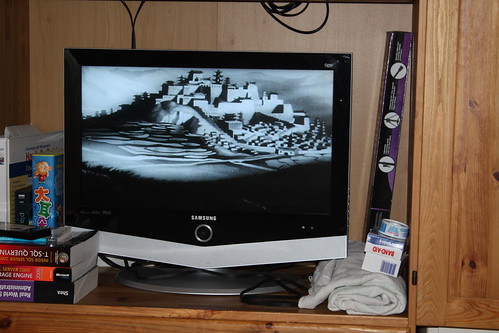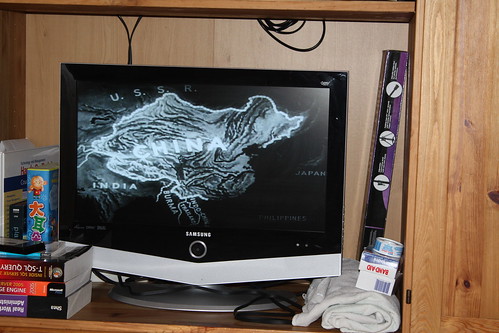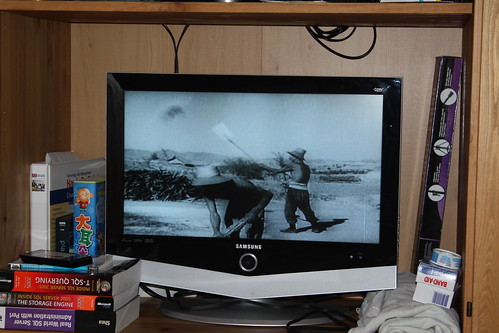I’ve read a couple of history books lately. Chinese history overall, especially the period since the mid 19th century, is fascinating to me. American history is also of great interest. I am currently working on an American history book.
Anyway, I noticed a series of US military propaganda movies on Netflix, made during World War II, called Why We Fight. One of them is the Battle of China. Another one, War comes to America, was on the same DVD. I watched both a few weeks ago. There is also a documentary of the same title, produced in 2005, that depicts the Military-industrial complex. I think I will check out that movie as well.
Anyway, it was really interesting to look back. How perceptions and people’s sense of history change over time, and how powerful a narrative can be when propagated through mainstream media of superpowers, first setting the context, then being wired, translated, quoted, and commented in media outlets all over the world. Fortunately, blogging, grassroots journalism, and the easy availability of information is changing that, probably similar to what happened when printing caused the easy availability of information in Europe right before the Protestant movement.
Here are a few images and things I found interesting.
1. There were a couple of scenes that depicts American people reciting the Pledge of Allegiance (对美国效忠宣言,美国中小学生每天早晨的例行活动和政府、法院仪式上常用的宣言) in War Comes to America. It was interesting to hear when “under God” was not part of it. “under God” was added in 1954;
2. The song, March of the Volunteers (义勇军进行曲), now the national anthem of the People’s Republic, was repeated a few times in the movie;
3. A few enduring images were chosen to represent China. The Great Wall was among them. It also included this image, the Potala Palace in Tibet:
4. Here is a map of China, as depicted in the movie.
5. At the end of the Battle of China, there was a narrative. I didn’t copy down the exact sentence, but it was something to the effect of “Your Japs were the Yellow Peril and we will crush your yellow faces”. According to wikipedia, Yellow Peril first referred to Chinese, then shifted to the Japanese during Japan’s aggression and invasion of East and Southeast Asia. The fear-mongering and stereotype of people is just incredible.
6. And finally, here is the picture of farmer winnowing wheat or rice in the 1940s. It looked familiar and intimate because I saw my parents and grandparents winnowing wheat like that in the 70s and early 80s. When I was growing up, the cutting and transporting of wheat to the threshing ground was all manual labor, and my mom did most of it. I did my meager share of that work also, but threshing was mostly done by threshing machines powered by electric motors during my day. My mom told me that the whole process of wheat harvesting in my hometown is mostly mechanized nowadays.



4 responses to “Why we fight — US government movie during World War II”
My parents in law harvest corn totally the old-fashioned way. The only time I’ve helped harvest the corn I had to be given gloves because I was shredding my hands. No machines were involved.
I’ve seen the same “Why We Fight” series, or at least some of the films, they certainly are interesting, and for a multitude of reasons.
I know what you mean. It’s tough work. I think corn harvesting at my hometown is manual also.
One of the tougher work in a cornfield was to spray pesticide using 喷雾器. You basically carry the container on your back with should straps, one hand cranking for air pressure, the other hand holding the handle spraying. As you walk through the field with the summer sun beating down on you, your shoulders getting red with strap marks, with no protection against the pesticide, boy, that’s tough work.
[…] 二战期间,中美是盟国,美战争部制作了一些类似《新闻简报》的宣传片,叫Why we fight/我们为何而战,有一集谈到亚太战区。那一集对中国战区的描述资料里有收麦扬场的画面,见上图,和我记忆中的画面并无二致。在那部影片里还可以听到抗日时的《义勇军进行曲》; […]
[…] 二战期间,中美是盟国,美战争部制作了一些类似《新闻简报》的宣传片,叫Why we fight/我们为何而战,有一集谈到亚太战区。那一集对中国战区的描述资料里有收麦扬场的画面,见上图,和我记忆中的画面并无二致。在那部影片里还可以听到抗日时的《义勇军进行曲》; […]